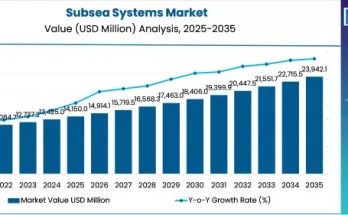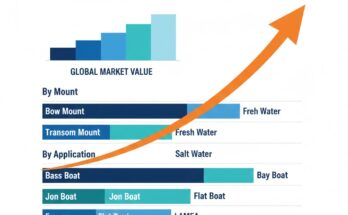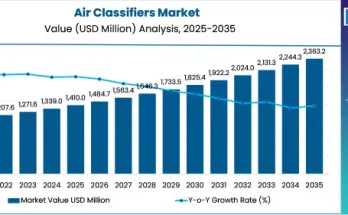The global optical sorting equipment market is rapidly evolving, reshaping industrial operations across food, recycling, mining, and more. The market was valued at approximately US$ 3.41 billion in 2024 and is projected to grow to US$ 5.89 billion by 2034, with a steady CAGR of 5.6%.
Why the growth? Higher demand for automation and operational efficiency is fueling adoption. Optical sorting systems reduce human error, increase yield, and help enforce quality standards—leading to potential cost savings of up to 50% in manufacturing. Moreover, sustainability imperatives and the push for waste reduction have made optical sorters indispensable in modern recycling and resource management efforts.
Technological Innovations & Market Evolution
From 2019 to 2023, the market witnessed a surge in the integration of high-resolution cameras, advanced sensors, and machine-learning algorithms—all improving accuracy, speed, and versatility.
- Short-term (2024–2027): Significant uptake of Hyperspectral Imaging (HSI) and Near-Infrared (NIR) technologies is expected, delivering strong growth and reducing sorting errors by around 20%.
- Medium-term (2027–2030): Advanced systems blending HSI, NIR, and X-ray capabilities will drive a 25% increase in productivity and 30% waste reduction.
- Long-term (2030–2034): AI and machine learning are set to transform systems into autonomous, adaptive sorting platforms, enabling nonstop learning and near-error-free operation, with an impressive projected growth rate during this period.
Geographic Insights
North America commands a strong position, accounting for 32% of global market share in 2024, with a valuation of US$ 1.02 billion. Rigorous food safety rules and widespread automation adoption are key growth factors.
Europe follows, contributing about US$ 742.3 million in 2024 and capturing roughly 23% of the market. The region benefits from robust food industries and strict waste management policies.
Leading Technology Segment
Among sorting technologies, Visible (VIS) cameras remain the most prevalent, holding 35.3% of the market share in 2023, and continuing with a CAGR of 3.9% through 2034.
Competitive Landscape & Key Players
The market features a highly competitive environment with major players such as TOMRA Group, Buhler AG, Allgaier Werke GmbH, Pellenc ST, and Key Technology (Duravant) leading innovation and expansion. These firms are investing heavily in R&D, partnerships, and technological breakthroughs to maintain their edge and expand market share.
Broader Market Context: Alternative Forecasts & Comparisons
To provide context, various industry studies offer additional projections:
- Some estimate the global market to grow from US$ 2.07 billion in 2023 to US$ 4.17 billion by 2032, with a CAGR of about 8%.
- Other research suggests an expansion from US$ 2.40 billion in 2021 to US$ 5.42 billion by 2030, at a 10% CAGR.
- Another forecast expects the market to reach US$ 4.1 billion by 2027, growing at 9.9% CAGR.
- A more optimistic projection anticipates a rise to US$ 7.45 billion by 2035, indicating a 9.2% CAGR.
These reports differ in methodology but consistently point to strong market momentum, with some predicting faster growth than the conservative 5.6% CAGR.
Final Thoughts
The optical sorting equipment market is on a solid growth trajectory, powered by automation, AI integration, and sustainability imperatives. Projections show the market moving from US$ 3.41 billion to US$ 5.89 billion by 2034, with other forecasts suggesting even faster expansion.
North America and Europe will remain leading regional markets, while VIS cameras maintain their dominance among technology options. Looking ahead, the shift toward autonomous and ultra-efficient sorting systems promises to redefine how industries manage quality, cost, and resource utilization.



